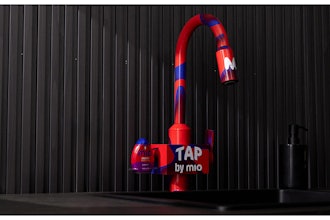
 Ben Miller
Ben MillerOn June 29, 2018, the Internal Revenue Service (“IRS”) released the Transfer Pricing Examination Process (“TPEP”), a 37-page document intended to guide IRS agents in the planning, execution and resolution of transfer pricing examinations (“TP Audits”). Below are Bennett Thrasher’s top ten TPEP takeaways for manufacturers.
1. Transfer Pricing Audits are Lengthy and Costly
TPEP openly asserts that TP audits will be a lengthy, costly process for IRS and taxpayers and illustrative timelines indicate two- to three-year audit processes. In addition to costs paid to outside advisors, taxpayers spend significant time and internal resources on TP audits. Providing the IRS with transfer pricing documentation drastically reduces the time and resources required to successfully defend a transfer pricing position in a TP audit.
2. The IRS Publicizes Use of Data Analytics for Selecting Taxpayers to Audit
TP audits will be triggered by perceived abnormalities identified through the IRS’s electronic data analytics tools that evaluate common tax forms, such as Forms 5471, 5472 and 8858. These analytics evaluate whether intercompany pricing is at arm’s length. Taxpayers should perform similar analyses to anticipate and plan for results of IRS’s analytical tools.
3. IRS References Website Content in TP Audits
The IRS will analyze a taxpayer’s website to evaluate their business operations. Website content can potentially mislead the IRS (i.e., identifying a sales office that no longer exists) or misrepresent the taxpayer’s actual functions and risks in each jurisdiction. Time is of the essence ensuring appropriateness of website language.
4. Bullseye on Hybrid Structures
The IRS explicitly states there will be increased scrutiny of transfer pricing involving hybrid entities. The IRS’s increased focus on hybrid structures is aligned with the OECD’s intent to “neutralize the effects of hybrid mismatch arrangements.”
5. IRS Emphasizes Supply Chains
TPEP specifies that IRS examiners will now consider the cash flow, product/service flow AND title flow of a given transaction in addition to the distribution of functions, risk and assets. Taxpayers should confirm all flows associated with the business are aligned with intentions, e.g., a commissionaire could be recast as a limited/full-fledged distributor if product title accidently runs through the entity.
6. The IRS Eyes Large Adjustments
The IRS is evaluating expected costs and benefits of TP audits when selecting taxpayers to audit. Transfer pricing documentation is the first line of defense against a TP audit; it will likely dissuade IRS from further investigation given the high cost associated with disproving the reasonableness of a taxpayer’s transfer pricing policy(ies).
7. The IRS to Respect Taxpayer Method Selection
IRS examiners are to evaluate whether the taxpayer’s selected transfer pricing method reflects, either as applied or with adjustments, an arm’s length result, rather than examining all available methods (as was the case previously.) This enhances the benefits of having transfer pricing documentation because documentation typically details a reasonable position for the method(s) selected to evaluate one or more intercompany transaction(s).
8. IRS Practice Units are Best Indicator of IRS Positions
TPEP instructs IRS transfer pricing examiners to reference IRS Practice Units when auditing transfer pricing arrangements. There are currently more than 40 Practice Units available on the IRS website, with dozens focused on supply chains relevant to manufacturers and new units being continually added. Taxpayers (and their consultants) should reference these Practice Units when planning and evaluating transfer pricing dealings.
9. IRS Expecting Uptick in MAP Requests
Examiners are instructed to coordinate with the Advance Pricing Mutual Agreement (“APMA”) program throughout a TP audit, with contact initiated during the initial risk assessment phase. IRS is seemingly involving APMA early in the TP audit process as a means to consider potential Mutual Agreement Procedure (“MAP”) requests that could follow any proposed adjustment. MAP, a lengthy and costly undertaking, is a process where competent authorities resolve disputes pursuant to double taxation conventions.
10. OECD Guidelines Themes Sneaking into TPEP
TPEP incorporates language and concepts derived from the Organization for Economic Co‑operation and Development’s Transfer Pricing Guidelines for Multinational Enterprises and Tax Administrations, signaling a shift towards global integration and cooperation with OECD member countries.
Final Thoughts
TPEP confirms our longstanding belief that transfer pricing documentation is the first and best line of defense for taxpayers in a transfer pricing audit.
Ben Miller is a Partner in the Transfer Pricing practice at Atlanta-based accounting firm Bennett Thrasher.






















